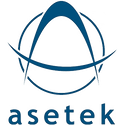Impact of Earthquake on Production Status of Taiwan's Semiconductor and Panel Industries Limited
On the evening of September 17, an earthquake with a magnitude of 6.4 on the Richter scale occurred in Guanshan Township, Taitung. Yesterday (9/18) afternoon, an earthquake with a magnitude of 6.8 on the Richter scale occurred in Chishang Township, Taitung. Following up on these recent powerful earthquakes, TrendForce's investigation into their impact on Taiwan's semiconductor and panel industries is as follows:
In terms of foundries, due to shock-absorbing plant designs, earthquake vibrations inside fabs are one level of magnitude less than outside. In terms of equipment manufacturers, currently there are no reports of substantial factory damage. In the worst case, some machinery required initialization after crashing. In terms of memory, Nanya Technology has already carried out a shutdown inspection. If there was any wafer damage, Nanya maintains sufficient inventory to compensate. Micron recalled engineers to inspect equipment and has confirmed no losses. Thus, the capacity utilization rate of these two companies has not been affected nor has supply.
In terms of foundries, due to shock-absorbing plant designs, earthquake vibrations inside fabs are one level of magnitude less than outside. In terms of equipment manufacturers, currently there are no reports of substantial factory damage. In the worst case, some machinery required initialization after crashing. In terms of memory, Nanya Technology has already carried out a shutdown inspection. If there was any wafer damage, Nanya maintains sufficient inventory to compensate. Micron recalled engineers to inspect equipment and has confirmed no losses. Thus, the capacity utilization rate of these two companies has not been affected nor has supply.
































